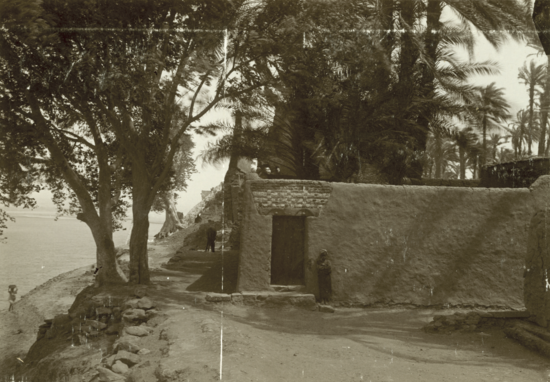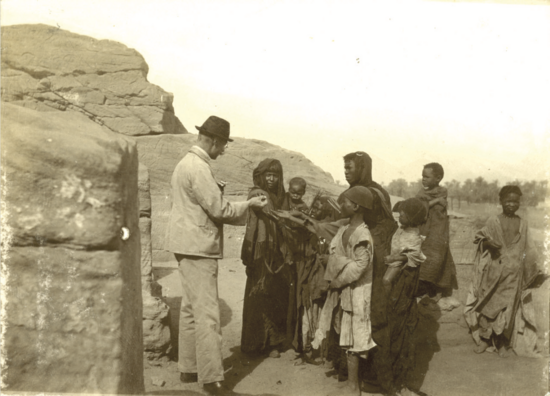Day 9-14 (March 11-16): From Amada to Wadi Halfa



"Before table with Grünau still Nubian women, the pylon in the village and the pretty door in the wall corner at the Tem[pel] photographed."
-- Hermann Thiersch, entry from March 12, 1900
" There is a heavy north blowing, but we can't get around the corner. Use the time to apply the shots of Derr. "
-- Hermann Thiersch, entry of March 13, 1900
" I'll clap off the Greek and Carian graffiti with Senussi and take photographs."
-- Hermann Thiersch, entry of March 16, 1900
At Derr, the Dahabije is stuck, so the participants visit the site already on the outward journey. Here, the first interactions with the local population take place, as well as the first inspection and scientific recording of an ancient Egyptian temple. After a few more involuntary stops, the expedition finally arrives in Wadi Halfa on March 15. Immediately the preparation of the excursion to the southern border fortress Semna is started, which takes place as a camel ride of several days.The old Wadi Halfa - an important trading town a few kilometers from the second Nile cataract - no longer exists: the local population was resettled in the 1960s, against considerable resistance, in the new town of "New Halfa" in the Nubian desert a few hundred meters from the reservoir shore. On March 16, the group visits the temples of Buhen, opposite Wadi Halfa, which today are also under water.
Quick Links



